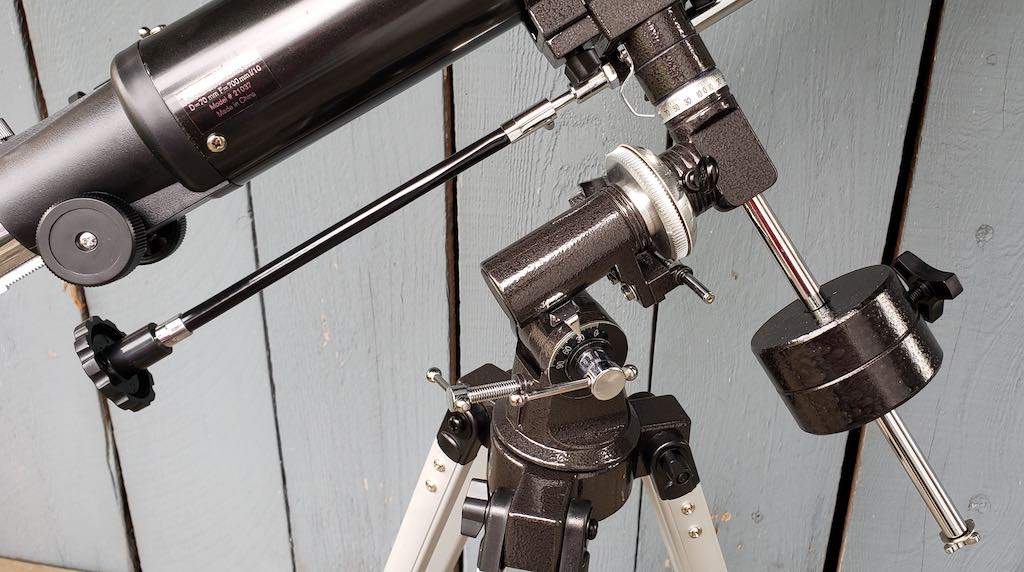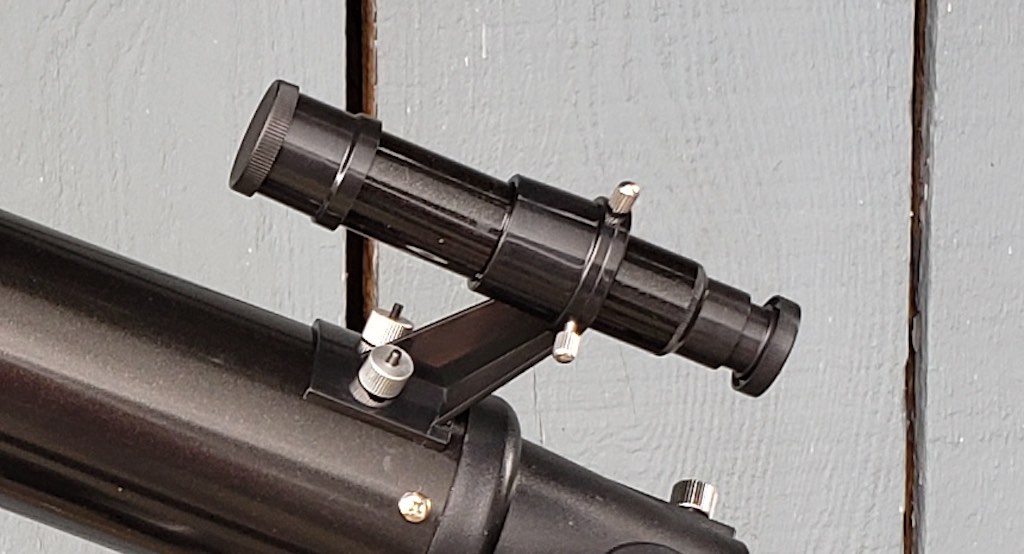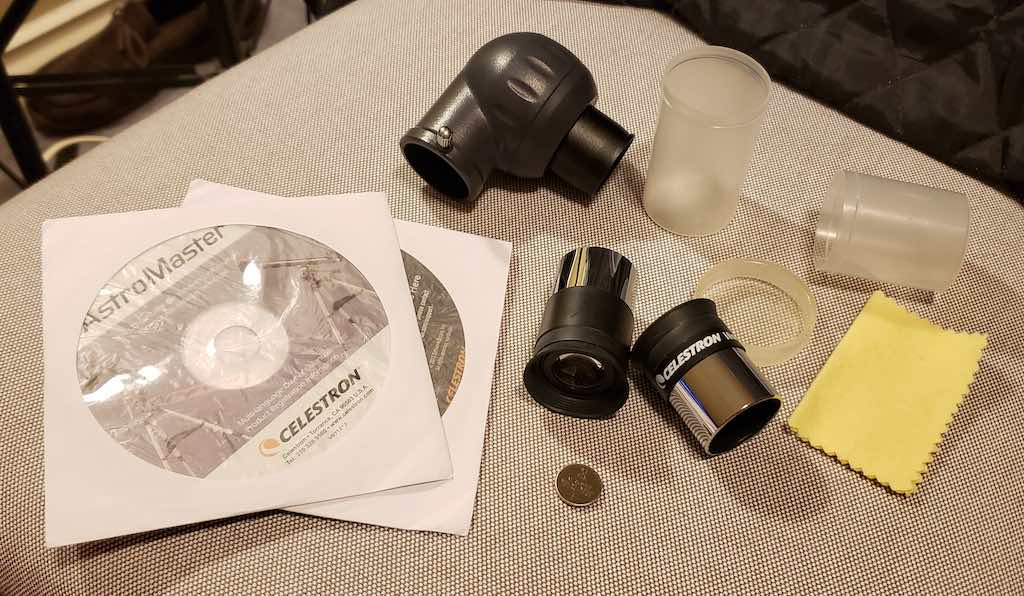
Stargazing season continues today with my second telescope review in only the last few weeks. This time I’ve got the Celestron PowerSeeker 70EQ refractor telescope and the Celestron 21063 AstroMaster 90AZ 90 x 1000mm refractor telescope. Of course, each of these telescopes is as well suited to terrestrial use as it is for astronomical observation. In any case, if you’re interested in telescopes and are thinking of getting your own Celestron refractor, read on to learn all about these 2 fun models and how they performed during testing.
But first, please take a few minutes to check out my video overview of these two telescopes. In it I show both models thoroughly and up close and discuss a number of their best features:
Celestron PowerSeeker 70EQ refractor telescope review
The Celestron PowerSeeker 70EQ refractor telescope is an excellent first telescope for anyone that may be interested in adopting astronomy as a fun and educational hobby. It comes with many excellent features that make it ideal for just about anyone short of Neil deGrasse Tyson. For instance, it has an equatorial mount (shown below) that allows it to track the movement of stars and planets across the nighttime sky as the Earth rotates beneath it.

This contraption is highly useful for photographing the objects you’re trying to observe as it prevents the phenomenon known as trailing (turning stars and planets into long lines of light in the photograph rather than an accurate depiction of the object). Of course, trailing can make for some really cool photos as well, but if you’re trying to do some serious astronomical research, it’s more of a problem than a benefit.
Other features of this particular model include a 70mm aperture, a 700mm focal length, a 3x Barlow lens that triples the magnification of each of the eyepieces, fully coated glass optics, an accessory tray that sits within the 3 legs of the tripod, and more, including the very useful “SkyX – First Light Edition” software. This astronomical software package features a database with 10,000 different celestial objects, and it also has 75 enhanced images along with printable sky maps. All up, you’re getting a whole lot with this telescope.
Putting the PowerSeeker together

Owing to its smaller aperture diameter when compared to the AstroMaster that I discuss below, I initially thought that the PowerSeeker telescope would be the easier model to assemble and use. Opps, I was totally wrong! This telescope was, in fact, a fair bit more complicated than the AstroMaster model, and, as a result, there were more bits and pieces to assemble (such as the equatorial mount and counterweight, as you can see in the image below).
Even so, it really only took about 15 minutes to fully put this thing together, and having tried a similar model previously, it was a fairly intuitive build. I would say that someone with no telescope experience whatsoever would still be able to get this model fully up and running in no more than 20-25 minutes—and maybe even a whole lot quicker than that. It’s really not too difficult, and the instructions are quite helpful. The only thing that slows it down at all are the number of parts there are to deal with.
Celestron 21063 AstroMaster 90AZ refractor telescope review

The Celestron 21063 AstroMaster 90AZ is a 90mm (aperture diameter) telescope with a 1000mm focal length that’s great for beginning astronomy enthusiasts. Although it has a number of useful features and benefits, it’s really a fairly simple and straightforward model that isn’t likely to intimate new telescope users.
Among its key features and inclusions are erect image optics, up to 100x magnification, a permanently mounted StarPointer with included battery, a sturdy tripod with 1.25″ steel tube legs and attachable deluxe accessory tray, pan handle Alt-Az control, all-coated glass optics, and Celestron’s special SkyX Astronomy Software.
Assembly and testing the Celestron 21063 AstroMaster 90AZ

Putting the Celestron AstroMaster together was super quick and easy. It only took about 5 minutes to do aside from an extra 5 or so where I was trying to figure out how the eyepiece attaches to the viewing end of the ‘scope. This was only an issue as initially the piece was too loose to fit securely into the telescope, though it was quickly solved when I discovered an extra piece in the box that filled in the gap and resolved the problem. Once this was done, off I went to find a good place to view the 98% full Moon from a small town on Vancouver Island.
 Though the Moon didn’t make its appearance until somewhat late in the evening, I was able to get a very good look at it through this telescope. I also got a good look at Jupiter and 3 of its moons. The telescope was extremely easy to use, and I didn’t even need to make use of the battery powered star finder to locate my targets. Of course, for finding more distant or difficult targets, this type of tool is invaluable. In any case, we observed both the Moon and Jupiter (along with the 3 of its moons that were visible) and had a great time doing it. Though this telescope is large, it’s fairly light, which allowed me to take it to a few different locations until we found a good dark place to view from.
Though the Moon didn’t make its appearance until somewhat late in the evening, I was able to get a very good look at it through this telescope. I also got a good look at Jupiter and 3 of its moons. The telescope was extremely easy to use, and I didn’t even need to make use of the battery powered star finder to locate my targets. Of course, for finding more distant or difficult targets, this type of tool is invaluable. In any case, we observed both the Moon and Jupiter (along with the 3 of its moons that were visible) and had a great time doing it. Though this telescope is large, it’s fairly light, which allowed me to take it to a few different locations until we found a good dark place to view from.
One more thing I’ll say about this telescope is that it definitely has a sturdier tripod than the Celestron PowerSeeker, though the telescope itself doesn’t feel nearly as solid. All up, it’s a very nice telescope model with enough power to see some of the most interesting celestial objects in the nighttime sky in a very satisfying way.
Final thoughts on the Celestron refractor telescopes

Having now tested and reviewed four different telescopes, I can definitely say that I’m a fan of these fun and educational devices. These Celestron refractors are no exception, and I would recommend either of them to anyone with an interest in pursuing astronomy whether as a hobby or a potential future career choice (high school students who are thinking of studying astronomy in university, for instance). If neither of these models is quite what you’re looking for (perhaps a Newtonian reflector is more your speed?), Best Buy has a great selection of Celestron telescopes for you to choose from.



